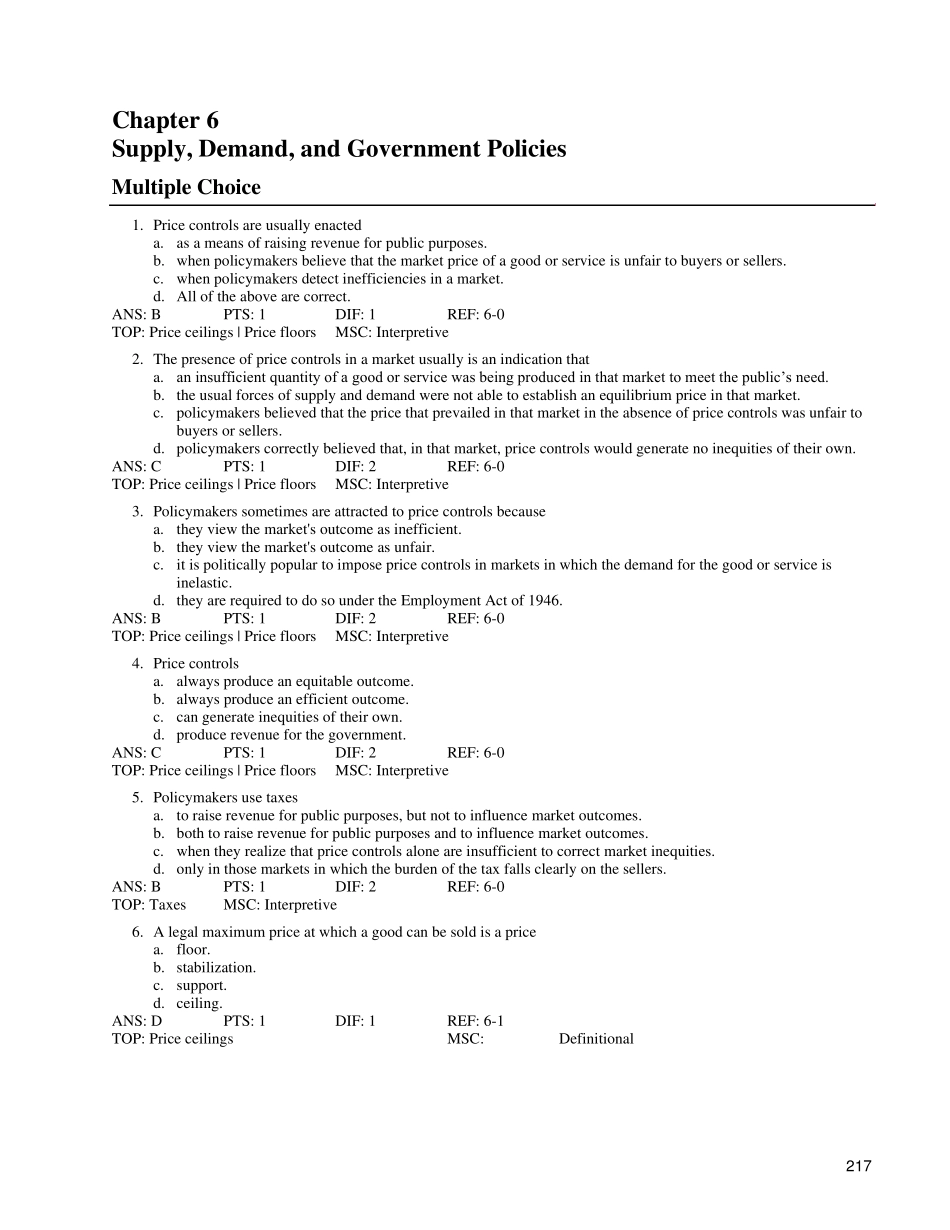217 Chapter 6 Supply, Demand, and Government PoliciesMultiple Choice 1. Price controls are usually enacted a. as a means of raising revenue for public purposes. b. when policymakers believe that the market price of a good or service is unfair to buyers or sellers. c. when policymakers detect inefficiencies in a market. d. All of the above are correct. ANS: B PTS: 1 DIF: 1 REF: 6-0 TOP: Price ceilings | Price floors MSC: Interpretive 2. The presence of price controls in a market usually is an indication that a. an insufficient quantity of a good or service was being produced in that market to meet the public’s need. b. the usual forces of supply and demand were not able to establish an equilibrium price in that market. c. policymakers believed that the price that prevailed in that market in the absence of price controls was unfair to buyers or sellers. d. policymakers correctly believed that, in that market, price controls would generate no inequities of their own. ANS: C PTS: 1 DIF: 2 REF: 6-0 TOP: Price ceilings | Price floors MSC: Interpretive 3. Policymakers sometimes are attracted to price controls because a. they view the market's outcome as inefficient. b. they view the market's outcome as unfair. c. it is politically popular to impose price controls in markets in which the demand for the good or service is inelastic. d. they are required to do so under the Employment Act of 1946. ANS: B PTS: 1 DIF: 2 REF: 6-0 TOP: Price ceilings | Price floors MSC: Interpretive 4. Price controls a. always produce an equitable outcome. b. always produce an efficient outcome. c. can generate inequities of their own. d. produce revenue for the government. ANS: C PTS: 1 DIF: 2 REF: 6-0...


